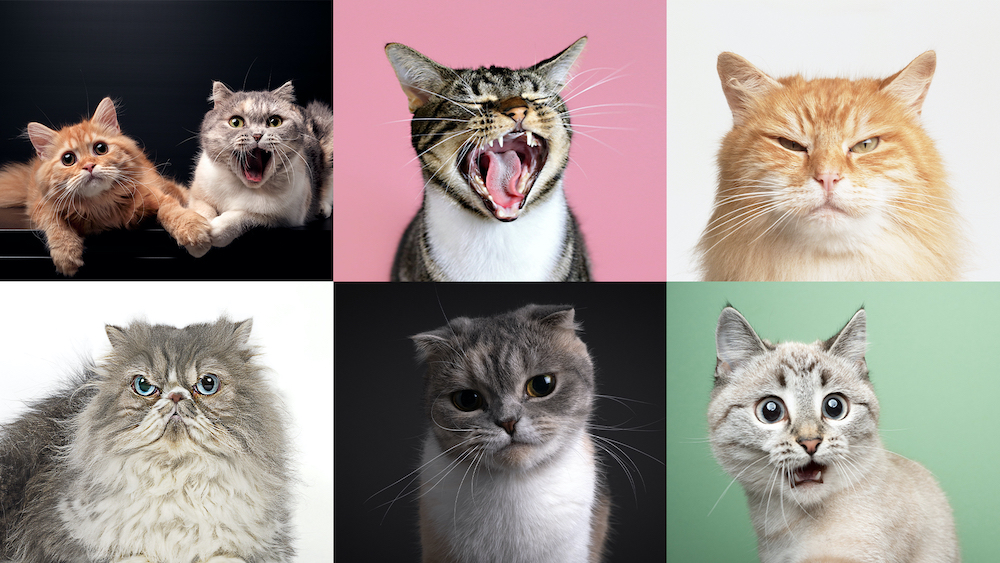Cats have nearly 300 facial expressions, including a 'play face' they share with humans
Researchers recorded hundreds of facial expressions in cats, finding they're not quite as aloof as previously thought.

Cats can use hundreds of facial expressions to communicate, a new study reveals.
Over the course of a year, researchers recorded a total of 276 distinct facial expressions used among a colony of 50 cats living at a cat cafe in Los Angeles. The felines' faces ranged from playful to aggressive and everything in between, according to the study, published Oct. 18 in the journal Behavioural Processes.
This is one of the first studies to do a deep dive into the ways felines communicate beyond the obvious purring and meowing.
Facial expressions in dogs, chimpanzees and humans have been well studied, revealing that humans have 44 facial expressions, canines have 27 and chimps have a whopping 357, according to a statement.
But there was a paucity of research on cat expressiveness.
"The literature is so sparse, and many studies only focus on the connection between cats and humans over the course of 10,000 years of domestication," study co-author Brittany Florkiewicz, an assistant professor of psychology at Lyon College in Arkansas, told Live Science. "At the cat cafe, we were able to document spontaneous interactions between the cats and record their facial expressions."
Related: Cats can memorize their friends' names, new study suggests
Sign up for the Live Science daily newsletter now
Get the world’s most fascinating discoveries delivered straight to your inbox.
Each individual expression combined roughly four of 26 unique facial movements, including parted lips, dilated or constricted pupils, blinking, curled corners of the mouth, nose licks and different ear positions, according to the study.
In one interaction, researchers noticed that a pair of kitties quickly went from playful to confrontational, with one suddenly crouching down and hissing at one of its littermates before running away.
"It was surprising to see them play-fighting, and then things escalated into an aggressive encounter," Florkiewicz said. "You can see a change in their facial expressions. At first one cat's eyes were more relaxed and its ears and whiskers were pushed forward, a movement to get closer to the other cat. But then things got ugly, and it moved its ears and whiskers backward — its demeanor changed pretty quickly."
After reviewing their recordings, the researchers concluded that more of the felines' expressions were friendly (45%) than aggressive (37%). Another 18% were ambiguous or fell into both categories, according to the study.
Researchers also found that many of the faces, including what they called "a common play face" — expressed with the corners of the mouth drawn back and the jaw dropped to form a laugh — was similar across a number of species, including people, dogs and monkeys.
More research will be needed to know exactly what the cats were "saying" to one another. But the researchers remain hopeful that the study will help shed light on the myriad expressions displayed by a species that's often called aloof, according to the statement.
"We hope that animal shelters and humane societies can use our research to help better assess the cats in their care," Florkiewicz said. "We've also had companies contact us about wanting to design an app that lets people record [and decode] cats' facial expressions."
Jennifer Nalewicki is former Live Science staff writer and Salt Lake City-based journalist whose work has been featured in The New York Times, Smithsonian Magazine, Scientific American, Popular Mechanics and more. She covers several science topics from planet Earth to paleontology and archaeology to health and culture. Prior to freelancing, Jennifer held an Editor role at Time Inc. Jennifer has a bachelor's degree in Journalism from The University of Texas at Austin.









